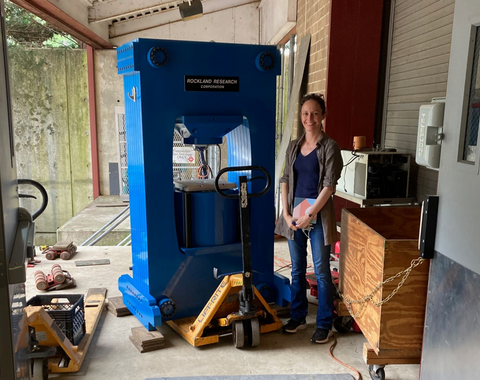For more than a century, Carnegie scientists have advanced our understanding of the geophysical and geochemical processes occurring far beneath Earth’s surface—deeper than machinery could ever safely reach. In the field, seismic and electromagnetic instruments make images of the planet’s interior and lab experiments allow researchers to impose deep-Earth conditions on tiny samples of rocks and minerals to see how they behave.
Now, Earth and Planets Laboratory scientist Anne Pommier is laying the groundwork for Carnegie’s next big advance in lab-based mimicry of planetary interiors.
“In order to fully interpret the datasets taken by researchers in the field, we need to be able to measure a sample’s seismic and electrical properties when it’s under the extreme pressure and temperature conditions found inside of a planet,” Pommier explained.
Energizing Electrical Exploration
Last year, she started incorporating electrical measurements into the suite of high-pressure research tools that have long been a hallmark of Carnegie’s work in the geosciences, recently publishing three important papers about the effects of sulfur on materials found in planetary interiors.
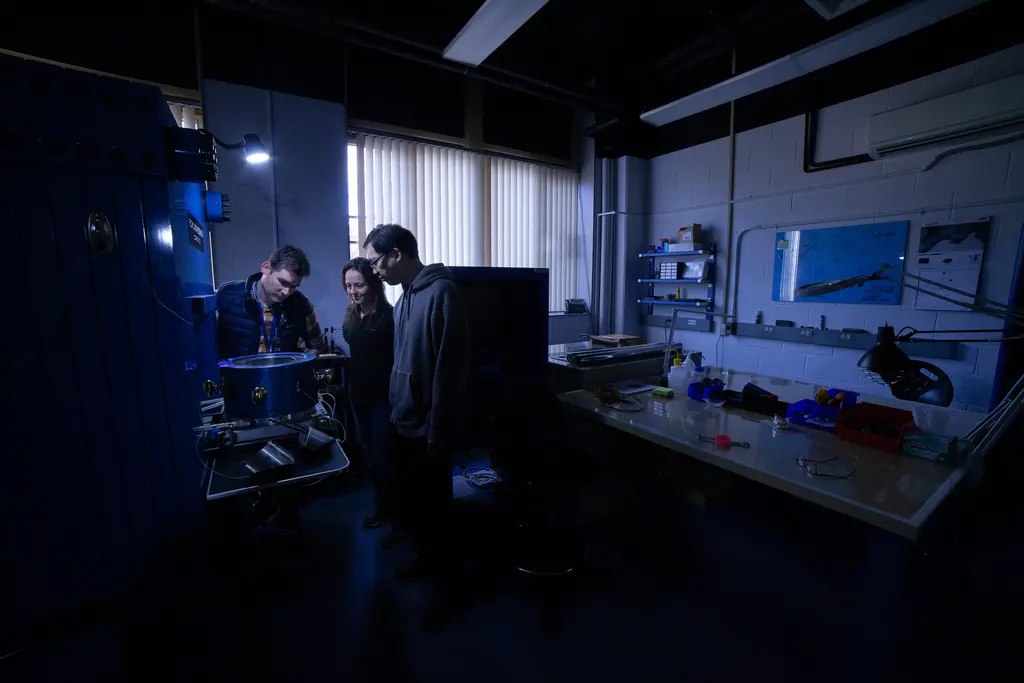
For example, Pommier deployed her lab’s new ability to measure the electrical properties of samples under high-pressure, high-temperature conditions to study the role of sulfur at the atom scale in the magma ocean of a young Mercury and potentially of other planets and moons.
By putting sulfur-containing silicate glasses and melts under conditions mimicking the Sun’s closest satellite, the research team—which included Carnegie geochemist George Cody, astrobiologist Andrew Steele, experimental petrologist Bjorn Mysen, and electron microprobe expert Emma Bullock, as well as collaborators at other institutions—gathered important data that will inform models of how terrestrial bodies evolve. Their work was published in Geochimica et Cosmochimica Acta.
In another paper, she and colleagues probed the conductivity of a rock called dunite, an analog for Earth's mantle, a that contain iron sulfides This work could help answer long-standing questions about the process by which early Earth’s interior differentiated into layers—iron core and silicate crust—as well as electrical anomalies in the stable blocks of the planet’s crust on which continents form. Their work was published in American Mineralogist.
Last month, Pommier and Earth and Planets Laboratory Director Michael Walter, along with Carnegie colleagues Ming Hao, a Carnegie postdoc, and Jing Yang, a high-pressure research technician, conducted a joint acoustic and electrical investigation of the lunar interior, showing that partial melting at the bottom of the Moon’s mantle can explain both seismic and electrical field observations. Understanding the Moon’s interior dynamics are fundamental to elucidating its evolutionary history. The experiments for this research were conducted both at Carnegie and the Argonne National Lab (HPCAT sector) and it was published in Earth and Planetary Science Letters.
Adding X-Rays to the Mix
Looking ahead, Pommier is setting up a new press that will enable Earth and Planets Laboratory researchers to simultaneously study seismic velocities and electrical properties of rocks under high temperatures and pressures, in combination with x-ray imaging.
“This setup will be unique in its capability to measure multiple different physical properties of samples right here in our research building,” Pommier said. “The scope of this project is unprecedented and will advance our ability to understand and contextualize what we’re learning from monitoring stations about subduction zones, where an oceanic tectonic plate slides under a continental plate, recycling material in the planet’s depths.”
Gallery: Testing the New Press
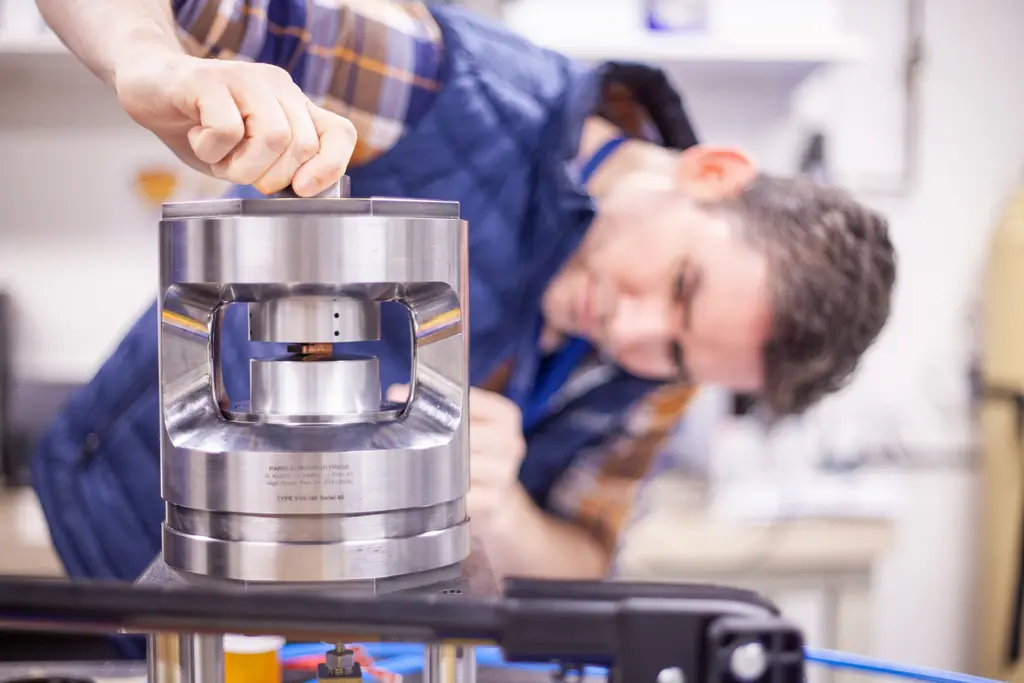
Laboratory Engineer Javier Rojas uses a plate of copper to test the recently acquired Paris-Edinburg press. The new press allows scientists to have open access to the samples under pressure, which means Anne Pommier and her colleagues will be able to use X-rays to probe the chemical makeup of materials at the Earth and Planets Laboratory without having to spend time and money to travel to external synchrotron facilities. (Image: Carnegie Institution for Science)
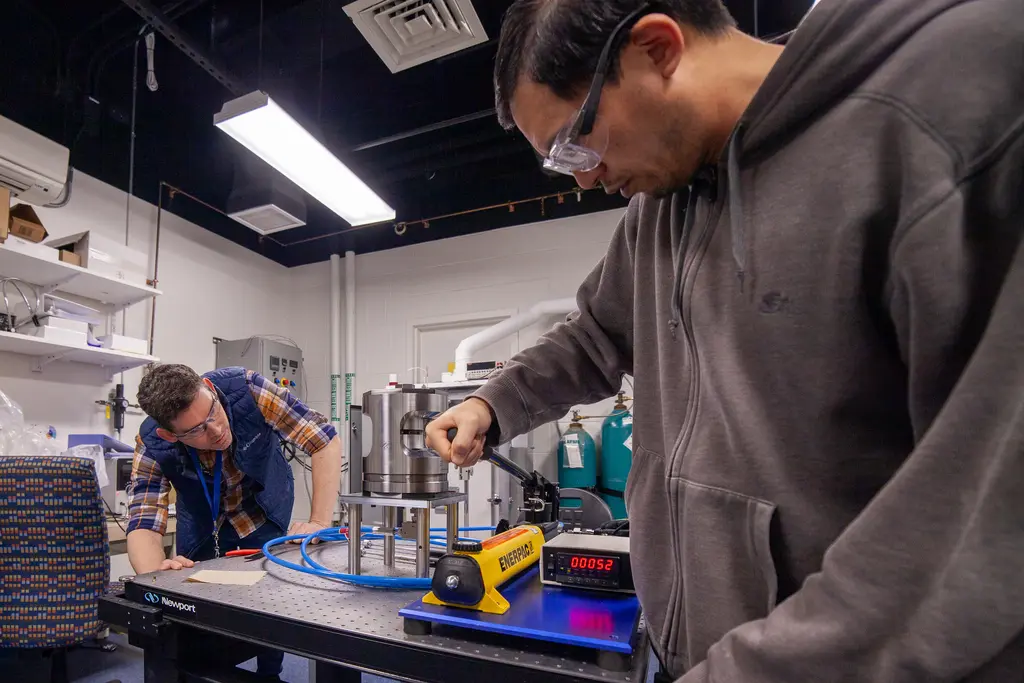
Instrumentation Engineer Joseph Lai uses a hand pump to pressurize the copper sample in order to test the functionality of the new Paris-Edinburgh press as Javier Rojas looks on. In this test, the sample reaches 52 bars of pressure, enough to deform the copper plate. When it’s set up, the press will be able to apply pressures up to 10 GPa. (Image: Carnegie Institution for Science)
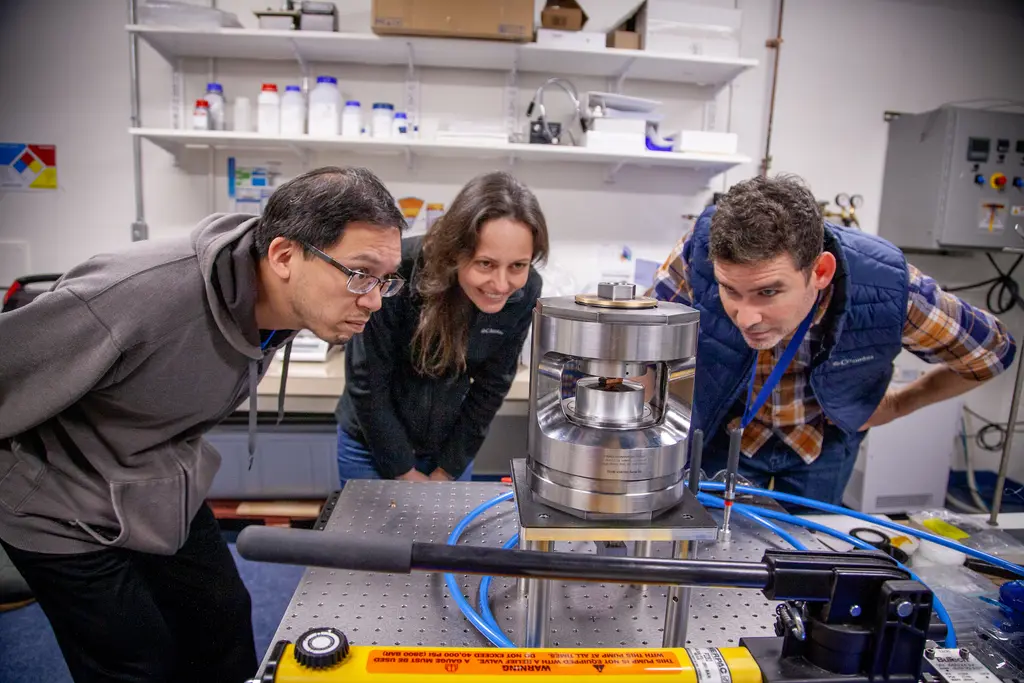
Laboratory Engineer Javier Rojas uses a plate of copper to test the recently acquired Paris-Edinburg press, which will allow researchers to simultaneously study seismic and electrical properties of rocks under high temperatures and pressures, in combination with X-ray imaging. The new press allows scientists to have open access to the samples under pressure, which means Anne Pommier and her colleagues will be able to use X-rays to probe the chemical makeup of materials at the Earth and Planets Laboratory without having to spend time and money to travel to external synchrotron facilities. (Image: Carnegie Institution for Science)
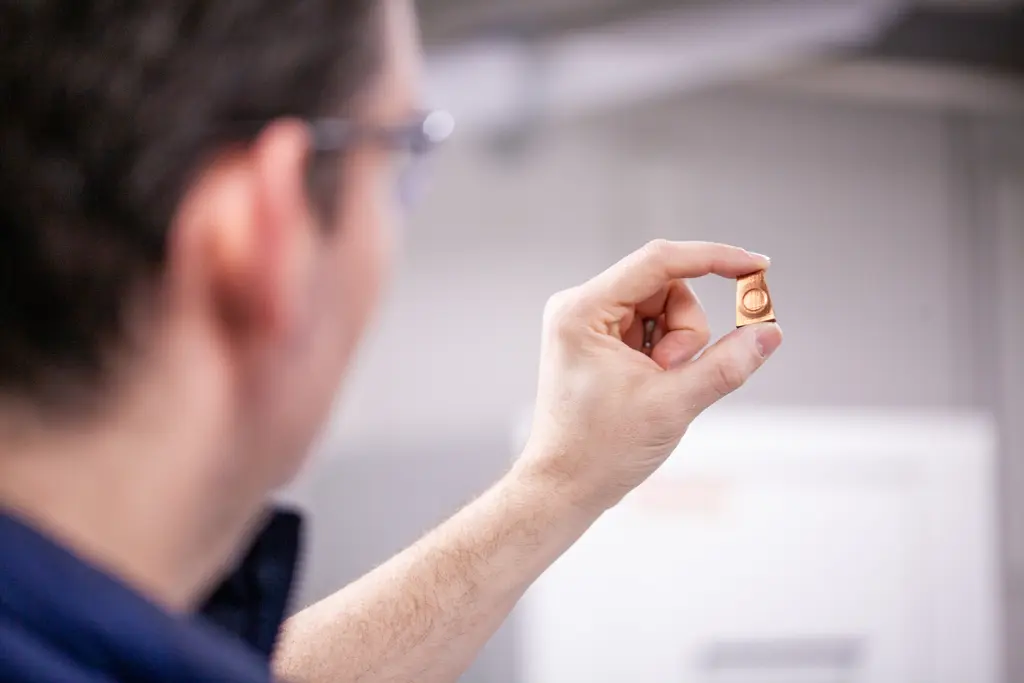
Javier Rojas holds up the copper plate to examine the deformation after the test. Beyond copper deformation, when fully functional, the press will allow Carnegie Science researchers to probe the seismic and electrical properties of rocks under the high pressures they experience inside of a planet or a moon. (Image: Carnegie Institution for Science)

Javier places a copper sample in the press
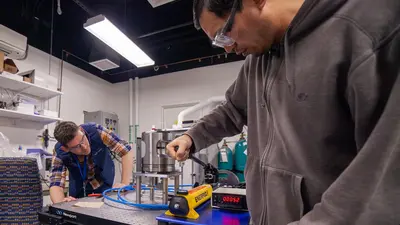
Joseph Lai uses a hand pump to presurize the copper sample. A screen indicates that the sample is under 52 bars of pressure.

Laboratory Engineer Javier Rojas uses a plate of copper to test the recently acquired Paris-Edinburg press, which will allow researchers to simultaneously study seismic and electrical properties of rocks under high temperatures and pressures

Javier holds up the copper sample to show the ring of deformation from the press.
Pommier and her collaborators are particularly interested in the presence of so-called volatile elements like water and carbon—named because of their relatively low boiling points—in the material that is exchanged during subduction. Understanding how volatiles, along with magma and other fluids, circulate in the Earth’s mantle will yield new information about the geohazards associated with these regions, including earthquakes and arc volcanoes.
Once completed, the data taken from this new instrument suite will be incorporated into models of subduction zones, which geoscientists who specialize in fieldwork will then apply to their findings, creating a loop of information connecting every area of Carnegie geophysics, geochemistry, petrology, and geodynamics. Many large population centers are situated along subduction borders, making this research of interest to emergency managers.
Pommier was able to make this new instrument a reality thanks to the support of The Brinson Foundation and the intrepid experts at the Earth and Planets Laboratory’s engineering team and on-site machine shop, where Victor Lugo, Cesar Sanchez, and Seth Wagner help scientists bring their technological visions to reality. In particular, Earth and Planets Laboratory engineers Javier Rojas and Joseph Lai are contributing to every step of the development and their expertise is key to the design of this ambitious experimental setup.

She is confident that the new approach will be a powerful tool for helping postdocs and visitors develop new projects and test ideas and will enhance synergies and collaborations among Carnegie scientists. Pommier expects the new press will enable researchers to elucidate information about the mineralogy and structure of other planets and to test their potential for habitability in the lab.
“Here at Carnegie, we have the right people with the right expertise who are given the freedom and flexibility to pursue novel ideas. With this new suite of equipment, we are ready to push the boundaries of the field yet again,” Pommier concluded. “It’s amazing to work at a place where you have access to so many great facilities and your supportive colleagues are all so bold and creative that your own research frontiers are pushed to new levels. This is how science should be done.”

